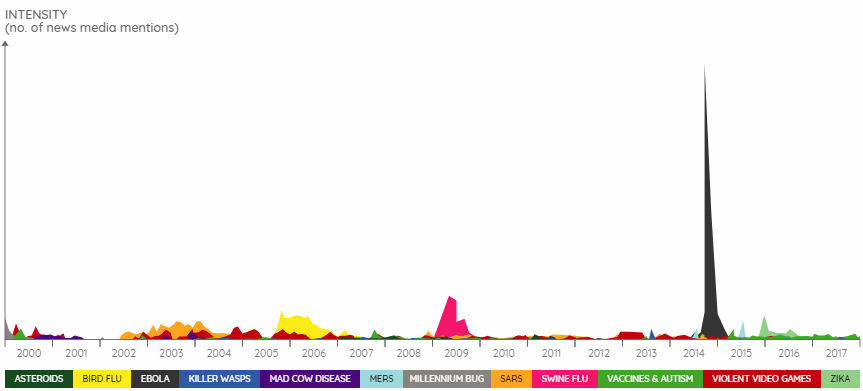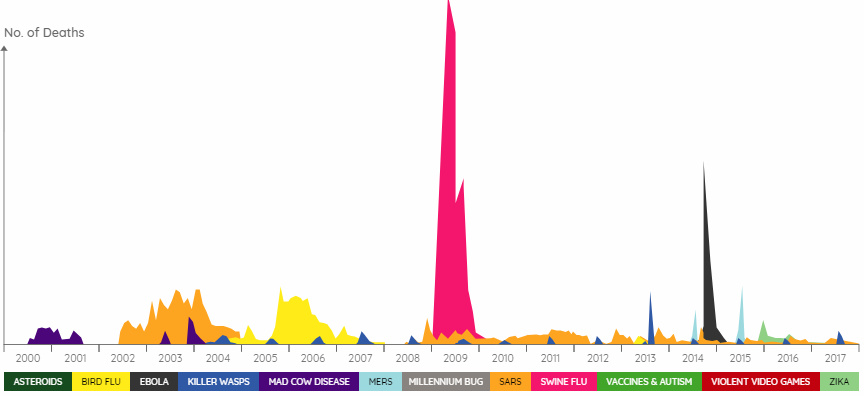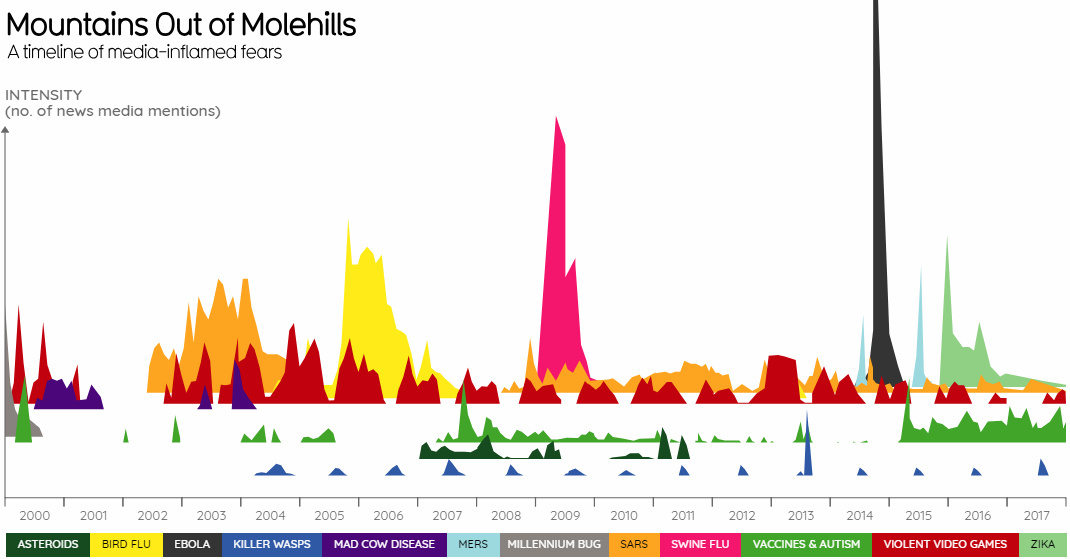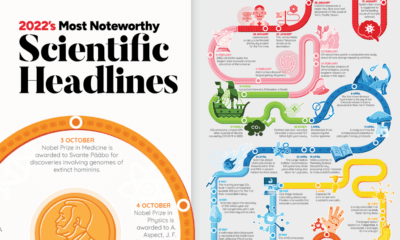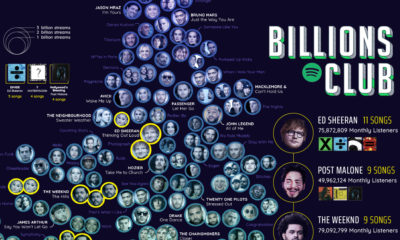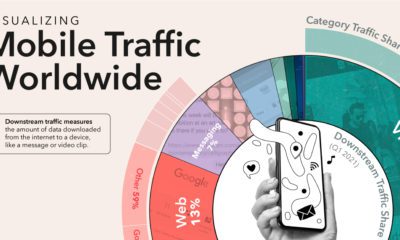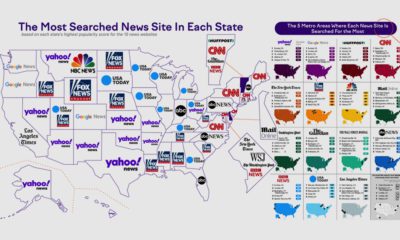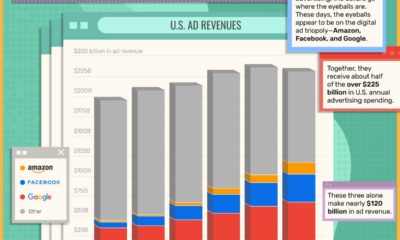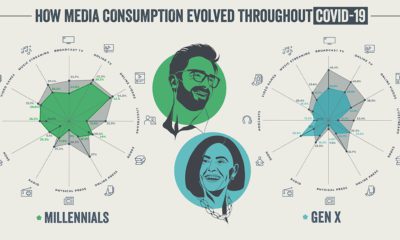The news cycle is sensational enough when we’re dealing with the regular issues of the day. But add in some uncertainty and urgency – such as when the world is dealing with an outbreak like SARS, Mad Cow Disease, Ebola, or even Y2K – and each headline seems to get more provocative or speculative than the last. Today’s graphics come to us from Information is Beautiful, and they show the intensity of news mentions for different topics that stoked frenzies in the media from 2000-2017.
Visualizing Ebola Sensationalism
We all make mistakes, but headlines for Ebola brought a new level of hyperbole to the table. “Ebola in the air? A nightmare that could happen” – CNN (link) “New Ebola Cases May Soon Reach 10,000 a Week, Officials Predict” – NYT (link) “Ebola as ISIS Bio-Weapon?” – Forbes (link) In fact, the outbreak in 2014 goes down as the most sensationalized events in the last 17 years. Here’s all other topics scaled to match Ebola mentions (which go “off the page” in the first graph):
Nothing is even close. By the way, it turned out that Ebola didn’t mutate into a scary airborne virus. The CNN article with the crazy headline even admits in the body of the article itself: “Speculation that Ebola virus disease might mutate into a form that could easily spread among humans through the air is just that: speculation, unsubstantiated by any evidence.” Meanwhile, Ebola cases hit a maximum rate of 6,987 in a month, mainly because of delayed reporting of older cases in Liberia. Regardless, that is just 17% of the predicted “10,000 cases per week” rate reported in a New York Times headline. Finally, as you’re probably aware: ISIS did not weaponize Ebola, either. Made for good clickbait, though.
Scaled to Death
When we scale the data to match total deaths, the sensationalism of many of the outbreaks is even clearer:
The death count for Ebola did eventually hit 11,310 globally, and Swine Flu resulted in 18,500 lab-confirmed deaths (and potentially many more). However, most of these outbreaks were relatively harmless in relative terms. The Zika Virus, for example, resulted in only a handful of deaths. While having zero deaths is certainly the ideal, and many of the issues above should be taken very seriously especially as stories develop, we should be careful not to blow things out of proportion. Making mountains out of molehills does not help anyone, and it adds to growing distrust of media in general. on Even while political regimes across these countries have changed over time, they’ve largely followed a few different types of governance. Today, every country can ultimately be classified into just nine broad forms of government systems. This map by Truman Du uses information from Wikipedia to map the government systems that rule the world today.
Countries By Type of Government
It’s important to note that this map charts government systems according to each country’s legal framework. Many countries have constitutions stating their de jure or legally recognized system of government, but their de facto or realized form of governance may be quite different. Here is a list of the stated government system of UN member states and observers as of January 2023: Let’s take a closer look at some of these systems.
Monarchies
Brought back into the spotlight after the death of Queen Elizabeth II of England in September 2022, this form of government has a single ruler. They carry titles from king and queen to sultan or emperor, and their government systems can be further divided into three modern types: constitutional, semi-constitutional, and absolute. A constitutional monarchy sees the monarch act as head of state within the parameters of a constitution, giving them little to no real power. For example, King Charles III is the head of 15 Commonwealth nations including Canada and Australia. However, each has their own head of government. On the other hand, a semi-constitutional monarchy lets the monarch or ruling royal family retain substantial political powers, as is the case in Jordan and Morocco. However, their monarchs still rule the country according to a democratic constitution and in concert with other institutions. Finally, an absolute monarchy is most like the monarchies of old, where the ruler has full power over governance, with modern examples including Saudi Arabia and Vatican City.
Republics
Unlike monarchies, the people hold the power in a republic government system, directly electing representatives to form government. Again, there are multiple types of modern republic governments: presidential, semi-presidential, and parliamentary. The presidential republic could be considered a direct progression from monarchies. This system has a strong and independent chief executive with extensive powers when it comes to domestic affairs and foreign policy. An example of this is the United States, where the President is both the head of state and the head of government. In a semi-presidential republic, the president is the head of state and has some executive powers that are independent of the legislature. However, the prime minister (or chancellor or equivalent title) is the head of government, responsible to the legislature along with the cabinet. Russia is a classic example of this type of government. The last type of republic system is parliamentary. In this system, the president is a figurehead, while the head of government holds real power and is validated by and accountable to the parliament. This type of system can be seen in Germany, Italy, and India and is akin to constitutional monarchies. It’s also important to point out that some parliamentary republic systems operate slightly differently. For example in South Africa, the president is both the head of state and government, but is elected directly by the legislature. This leaves them (and their ministries) potentially subject to parliamentary confidence.
One-Party State
Many of the systems above involve multiple political parties vying to rule and govern their respective countries. In a one-party state, also called a single-party state or single-party system, only one political party has the right to form government. All other political parties are either outlawed or only allowed limited participation in elections. In this system, a country’s head of state and head of government can be executive or ceremonial but political power is constitutionally linked to a single political movement. China is the most well-known example of this government system, with the General Secretary of the Communist Party of China ruling as the de facto leader since 1989.
Provisional
The final form of government is a provisional government formed as an interim or transitional government. In this system, an emergency governmental body is created to manage political transitions after the collapse of a government, or when a new state is formed. Often these evolve into fully constitutionalized systems, but sometimes they hold power for longer than expected. Some examples of countries that are considered provisional include Libya, Burkina Faso, and Chad.
